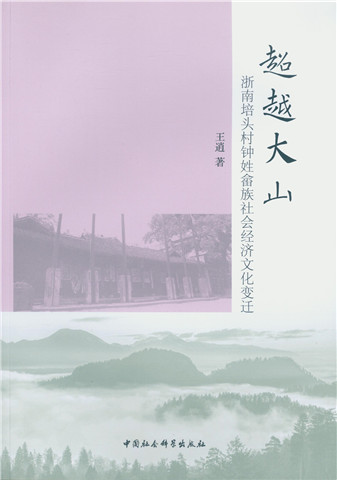A field study of the She ethnic group

Out of the Mountains
Author: Wang Xiao
Publisher: China Social Sciences Press
Out of the Mountains by Wang Xiao demonstrates new characteristics in terms of field study and anthropological research.
Wang conducted a deep investigation of Peitoucun, a culturally rich She ethnic village with a large number of people surnamed Zhong. The study focused on their socioeconomic and cultural changes. In addition, other counties in the south of Zhejiang Province, such as Wencheng and Songyang, have similar She ethnic villages, and they were included in the book as points of reference. Comparative field research about She ethnic groups that reside in central and northern Zhejiang were also conducted to understand the essential features of She villages.
The field study was conducted from multiple angles, expanding the traditional anthropological method of small community research that analyzes problems from micro perspectives to show a comprehensive picture. But the traditional method is limited by its narrow focus on a small community, so better insights into the problems could be gained only by the extension of one case study and numerous studies.
Wang not only observed and took notes on the activities of She people with surname Zhong, but also collected folk tales, letters, contract documents, inscriptions, local rules and regulations, account books, song transcripts and drug prescriptions of the She ethnic group, as well as other pieces of historical literature and data. She also paid attention to ancestral halls, village temples, villagers, working tools and other physical symbols.
In addition, Wang went undercover to play the part of a villager. She participated in the construction of a She ethnic tourism village over the course of five years. In this process, Wang collected the historical and cultural information of ancestors with the surname Zhong and directed the villagers to protect their local cultural relics, launching travel programs with She features. She also helped stabilize relations between grassroots organizations and villagers. These participatory activities not only led the She people to improve their cultural awareness and community consciousness as a member of the group, but also provided a path for cultural and economic interaction for the ethnic village.
The book integrated theory with practice from the perspective of community building and put forward a series of suggestions on China’s rural development. For example, Wang suggested fostering NGOs and non-profit organizations dedicated to boosting the rural development and encouraged these diverse social organizations to perform as a bridge between the local government and rural community. She said that college students and other young intellectuals should be supported when they express a desire to return home. In addition, Wang suggested that community education and training systems should be built to enhance the self-help capacity of rural residents. She also made suggestions for realizing sustainable development in the village by developing cultural and creative industries, characteristic agricultural industries, and green home-stay activities.
